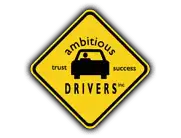So you’ve passed all of your tests, gotten your license, and are ready to get out on the road. Now what? Driving is more than just getting your license and getting behind the wheel. Nobody has it harder than young drivers, either. Not only do you have to navigate the rules of the road for the first time, learn to adjust to other drivers, and get over any nerves that might be in the way, you also have to do so usually under the scrutiny of your parents and the law. Here are some great driving tips for young drivers to help you adjust better.
Take it slow
You are probably excited to have gotten your license and proud to have passed your test. You should be. Still, you should probably take it slow. Don’t just jump right in the car and go gallivanting across town and the whole province. Try heading down to the local store first or driving to a close friend’s house during downtime. This will help you get used to being in the car alone and taking care of things. If you are brave enough to jump on the highway alone, then do it. But it’s sometimes best to slow things up a bit.
Learn to say no to friends
There is good chance that if you are very young, then you are the first among your friends to get a license. This means that people are going to be asking you for rides everywhere. Why walk when you can take a car? Not only can they be a drain on gas money, but they can also be a distraction. It isn’t their car or their license that is at stake. It isn’t that they are bad friends, it’s just how a lot of people act. Tell them that you aren’t going to drive everywhere and don’t give in to pressure.
Take the car as little as possible
If you are commuting to school, driving long distances, or doing big shopping, then take your car. That’s what it is there for. But don’t become dependent on it like so many people do. Don’t be lazy. Walk to close places, take public transport if you can or get a bike to cruise around on in the warm months. Many people take cars as a license to be lazy. Not only does this cost gas money, pollute the environment, and make you dependent, but it is also lazy. A car is a privilege. Treat it like one.
Getting your license is a rite of passage and one of the most important events in a young person’s life, but starting to drive is just the beginning. In order to get better at driving and become more accustomed to the road, use these great tips for young drivers. Congratulations, and have fun driving!






